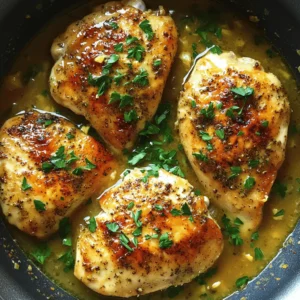
The Best Juicy Skillet Chicken Breasts
Discover the secret to irresistible juicy skillet chicken breasts with this easy recipe! Perfectly seasoned and seared to golden perfection, these chicken breasts are finished in a flavorful lemon broth that will leave your taste buds dancing. Ideal for a quick weeknight dinner, this dish is not only delicious but also simple to make. Click through to explore this mouthwatering recipe and elevate your meal tonight!